Red light therapy has long been used to improve skin and muscle recovery—but what if it could help your mind feel sharper, too? Many people struggling with brain fog are now turning to light-based therapy as a non-invasive way to regain clarity. If you often feel mentally drained, forgetful, or unfocused, your brain may be lacking energy at a cellular level.
This article explores how red light therapy may offer relief—not by masking symptoms but by targeting the root biological causes of brain fog. From boosting neuron power to improving blood flow and calming inflammation, we’ll break down the science in simple terms and show how light might help lift the haze.
What Is That Feeling of Constant Mental Fog
You sit at your desk and stare at your screen, and nothing clicks. The words blur. The to-do list feels heavier than it should. You're not tired exactly, but your brain feels sluggish. That's brain fog.
Brain fog isn’t a formal diagnosis, but it affects millions. It shows up as:
- Trouble focusing
- Forgetting basic things
- Mental exhaustion after simple tasks
- Feeling “off” or disconnected from the world
It can stem from poor sleep, chronic stress, medication side effects, hormone changes, long COVID, or even diet. For some, it fades with rest. For others, it lingers. When that mental cloud doesn’t lift, people start looking for deeper solutions—and red light therapy is gaining attention as a natural, science-based option.

What Is Happening Inside a Foggy Brain
Brain fog is not “all in your head.” Underneath the fuzzy thinking, real biological changes are happening. Let’s explore a few of the most important ones:
1. Reduced Blood Flow to the Brain
When blood circulation slows down, your brain doesn’t get the oxygen and glucose it needs. This can cause:
- Slowed mental processing
- Poor memory formation
- Reduced alertness
Even mild reductions in blood flow can impair focus and learning.
2. Low Cellular Energy (ATP Deficiency)
Your brain uses about 20% of your body's energy, even though it’s only about 2% of your weight. When your brain cells (neurons) don’t produce enough ATP (adenosine triphosphate), everything slows down—from thought speed to mental endurance.
3. Chronic Neuroin inflammation
Inflammation in the brain, even at low levels, disrupts normal nerve communication. It increases oxidative stress, damages cells, and creates the sensation of “mental fog.” Common causes include stress, infections, gut-brain imbalance, and autoimmune activity.
Together, these three issues create a vicious cycle: Less blood = less oxygen → fewer energy molecules → more stress and inflammation → more fog. Breaking that cycle is the key—and light may be the tool.
Introducing Red Light Therapy for Cognitive Support
Red light therapy has been studied for decades in wound healing and skin health. But newer research has turned the spotlight on the brain. This therapy uses red (600–700 nm) and near-infrared (800–1000 nm) light to stimulate beneficial biological changes. The method is called photobiomodulation.
Instead of adding something artificial to your body, red light therapy helps your cells work better—a bit like giving your brain cells a fresh charge. This process shows promise for memory, mood, and cognitive clarity. Several clinical studies and trials are now exploring its effects on people with cognitive decline, concussion, and brain fog from post-viral fatigue.
It’s not magic—it’s mitochondria science.
How Light Reaches and Affects Your Brain Cells
One major question people have is: How can light reach the brain through skin and bone?
The answer lies in the penetration power of near-infrared (NIR) light. Red light travels a few millimeters into the skin, but NIR light can pass through soft tissue and bone, reaching structures like:
- The prefrontal cortex – linked to attention, decision-making, and mood
- Default mode network – associated with daydreaming, memory, and introspection
- Limbic system – regulates emotional processing
Red light therapy devices often target the forehead or skull base, where the bone is thinner. Once light reaches brain tissue, it interacts with a key enzyme in mitochondria called cytochrome c oxidase. This boosts ATP production and sparks multiple healing processes.

Boosting Your Brain’s Natural Energy Source
Inside every neuron, mitochondria work like power plants. When you’re foggy, tired, or stressed, your mitochondria often produce less ATP. That means:
- Slower brain signal transmission
- Less efficient synapse function
- Decreased ability to focus or retain information
Red and near-infrared light helps these mitochondria absorb more light energy and create ATP more efficiently. Several animal and human studies show that this increased energy helps improve memory scores, reduce reaction times, and boost general alertness—even after a single treatment.
With regular use, red light therapy can give your brain the consistent energy flow it needs to stay clear and sharp.
Enhancing Cerebral Blood Flow for Sharper Focus
Your brain is sensitive to changes in circulation. Even a small drop in oxygen or glucose can impair your ability to think clearly. That’s why good blood flow is critical—and red light therapy helps increase it through a process called vasodilation.
When NIR light hits your cells, it stimulates the production of nitric oxide, a molecule that helps widen blood vessels. Wider vessels mean:
- More oxygen delivery
- Better nutrient transport
- Faster removal of waste (like CO₂ and toxins)
Clinical studies using near-infrared helmets or LED panels have shown increased regional cerebral blood flow, particularly in the frontal lobes. For people with brain fog, that means better focus, faster thinking, and more mental endurance.
Calming Inflammation to Restore Mental Clarity
Inflammation in the brain isn’t always dramatic, but it’s often persistent—especially after illness, injury, or long-term stress. Red light therapy helps regulate inflammation in several ways:
- Reduces pro-inflammatory cytokines like IL-6 and TNF-alpha
- Increases antioxidant enzyme levels (such as SOD and glutathione)
- Helps reduce microglial overactivation, which can damage neurons
Less inflammation means more stable moods, better attention, and lower mental fatigue. Some researchers believe that light therapy may even help protect against age-related cognitive decline by reducing chronic neuroinflammation.
How to Use Red Light Therapy for Your Brain
Red light therapy isn’t one-size-fits-all, but there are basic guidelines for brain-focused use.
Recommended Device Types:
- Near-infrared LED panels (placed in front of the face/head)
- Wearable NIR helmets or headbands
- Handheld devices (used at the temples or forehead)
Best Wavelengths:
- Red Light: 630–660 nm
- Near-Infrared: 810–940 nm
Session Duration:
- 10 to 20 minutes per session
- 3 to 5 sessions per week
- At least 4–6 weeks for noticeable results
Tips for Success:
- Use the device at a fixed distance (often 6 inches)
- Do sessions in the morning or early afternoon for a better cognitive boost
- Track your symptoms weekly to see changes over time
Although safe for most people, always check with a doctor before starting if you have neurological conditions, implants, or seizure disorders.
A Brighter Path to a Clearer Mind
Brain fog can feel endless, but it often starts with solvable problems: low energy in the brain, poor blood flow, and subtle inflammation. Red light therapy addresses all three at once—naturally, non-invasively, and safely.
By energizing your brain cells, improving circulation, and calming inflammation, red light therapy offers a powerful new tool for clearing mental haze. It’s not a quick fix, but with consistent use, many people report:
- Sharper thinking
- More mental stamina
- Improved short-term memory
- Better mood and motivation
If you’ve tried coffee, supplements, and rest—and still feel stuck—light could be your next step. Your brain is designed to heal and perform. Sometimes, it just needs the right signal to shine again.
Frequently Asked Questions (FAQs)
Q1. Is red light therapy safe to use on the head over a long period of time?
Yes, studies so far suggest that red and near-infrared light therapy is safe for regular use on the scalp and forehead—when used at recommended intensities and durations. Unlike UV light, red/NIR light is non-ionizing and does not damage DNA or overheat tissues. Long-term safety has been supported in trials involving cognitive decline and post-injury recovery, with no reported adverse effects. However, high-power lasers (Class 3B or 4) should be used only under professional supervision.
Q2. Can red light therapy be combined with other brain health treatments or supplements?
Red light therapy is often used alongside other cognitive support strategies, including:
- Omega-3 fatty acids
- Lion’s Mane mushroom (Hericium erinaceus)
- Mindfulness-based therapies
- Cognitive training or neurofeedback
In fact, some research suggests synergistic effects when red light therapy is combined with anti-inflammatory nutrients or nootropic compounds. However, anyone on medication (e.g., SSRIs, stimulants) should consult a healthcare provider, as responses may vary.
Q3. How soon can I expect mental clarity improvements from red light therapy?
Some users report improvements in alertness and focus after just a few sessions, especially if brain fog is due to temporary fatigue or poor sleep. For deeper, chronic brain fog (e.g., from post-viral inflammation or concussion), noticeable improvements may take 3 to 6 weeks of consistent use. Cognitive changes are gradual because the therapy works at a cellular and vascular level, not by instantly changing neurotransmitter levels like caffeine or stimulants.
Q4. Is red light therapy helpful for hormone-related brain fog, like in menopause or hypothyroidism?
Emerging research suggests that red light therapy may help support cognitive symptoms tied to hormonal changes. For example, estrogen decline during menopause can reduce blood flow and mitochondrial function in the brain. Red light therapy supports both. Similarly, hypothyroidism-related fog often stems from reduced cellular metabolism and inflammation, both of which red light may improve. However, red light therapy is not a replacement for hormone treatments or thyroid medication—it may be a supportive add-on.
Q5. Does red light therapy influence sleep quality, which also affects brain fog?
Yes, it can. Several studies have found that morning or afternoon red light exposure may help regulate circadian rhythms by supporting melatonin balance and improving sleep onset latency (how quickly you fall asleep). Better sleep quality can reduce brain fog by enhancing overnight memory consolidation and clearing metabolic waste via the glymphatic system. For best results, avoid using red light therapy late at night, as near-infrared light may boost alertness temporarily.



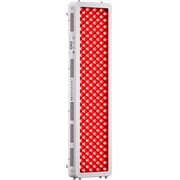









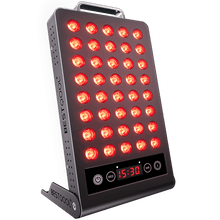
 Small
Small
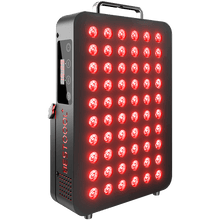
 Moderate
Moderate
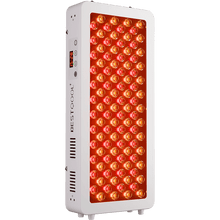
 Moderate
Moderate
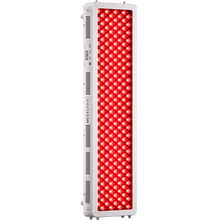
 Moderate
Moderate

 Full
Full



